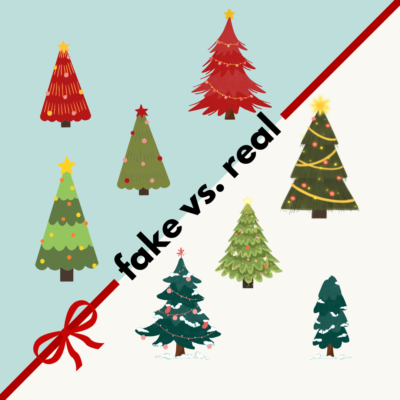Real vs Fake Trees: Which one is better?
What type of Christmas tree is better for the environment? Let’s talk about it! Both real and fake Christmas trees CANNOT be recycled at the WWRA.
Real and artificial trees, wreaths, and garlands have extensive environmental footprints throughout their lifecycles. Fake trees are made with “virgin” or nonrecycled plastic and metal. Extracting and creating these materials requires large amounts of water, labour, and electricity. Once used, artificial Christmas trees cannot be recycled, and must be thrown in the landfill. There, artificial trees break down over hundreds of years, leaching microplastics into our waterways.
Real trees, on the other hand, are biodegradable. Once the season is over, evergreen trees can be composted and returned to the environment. However, disposing of evergreens in landfills can cause them to break down incorrectly, releasing harmful methane gas. When evergreens are grown on tree farms, pesticides and fertilizers are used, which can harm the ecosystem and lead to algal blooms. Additionally, these tree farms require large plots of land to be clear cut, replacing native forests with evergreen monocultures.
So, which one’s better?
This topic is highly debated and has no black or white answer. As a senior working towards a degree in Environmental Science, analyzing the life cycle of a product can get extremely complicated…
The best solution is always to USE WHAT YOU HAVE! If you have an artificial tree, wreath, or garland, use it until it breaks. If you have a real tree, compost it when the season is over. No matter what, DO NOT RECYCLE these trees. Once you’re ready for your new tree, purchase it with consideration for its impact. Buy artificial trees secondhand, and buy real trees from sustainable tree farms.
Stay Evergreen this holiday season, and keep recycling!

